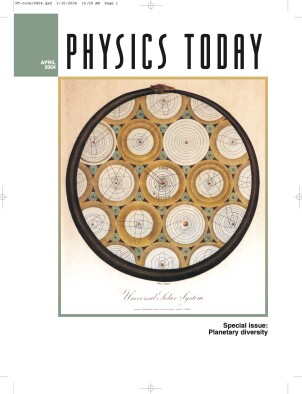Active black holes in inactive galaxies
DOI: 10.1063/1.4796479
Astronomers generally agree that supermassive black holes (BHs) fire the engines at the hearts of so-called active galaxies, but many suspect that dormant supermassive BHs also lurk at the hearts of many normal galaxies. A quiescent BH should flare brightly in x rays from time to time as it tidally disrupts a nearby star and accretes the resulting debris. Now, an international group of astronomers has found evidence for just that scenario. Combining historical data from the German ROSAT satellite with new observations from the European Space Agency’s XMM-Newton and NASA’s Chandra X-ray Observatory satellites, the researchers identified three galaxies that showed flaring nuclei consistent with the tidal-disruption model. In one case, the astronomers could even obtain an x-ray spectrum that further supported their interpretation of the data. (S. Komossa et al., Astrophys. J. Lett. 603, L17, 2004 http://dx.doi.org/10.1086/382046
